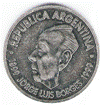Modern Languages and Literatures, Department of
Date of this Version
1997
Citation
Carmelus. 44 (1997), p. 220-222 ..
Abstract
This monograph deals with the life and work of John of St. Samson. lay brother of the Carmelite Ancient Observance, reformer, mystic. author of spiritual treatises and poet. Curiously, this blind prolific Counter-Reformation era author is little known today even by his compatriots and is virtually unknown outside the French-speaking world.
In his analysis of the formal elements of Jean's work, Stefanotti stresses the mystic's preference for classical structures: in poetry, the sonnet; in music, the chanson. Among figures of speech, Jean was fond of "coupling, tripling, oxymoron, often employed to express paradox (p. 66, 70). The author points to the frequent compact, polisemic employment of cornerstone terms and alludes to "the conflation of symbols," which allows us to view Jean's poetic texts as specifically mystical ones (p. 111). In the chapter dedicated to spiritual images, Stefanotti accentuates the influence of the Rheno-Flemish school of mysticism upon Jean du Moulin. With its roots geographically to the North, this late medieval school is characterized by a strong Trinitarian element, by the doctrine of exemplarism, and an emphasis on the notion of the image of God being impressed in the souL Jean's spiritual theology and his poetic imagery are indeed permeated by the Rheno-Flemish John Ruusbroec, as the research of P. W.Janssen has highlighted. Thus Stefanotti summarizes: "John of St. Samson used the tools of Baroque poetry, Ruusbroecian spirituality and the lived life of Carmel to craft his spiritual texts" (p. 129).

